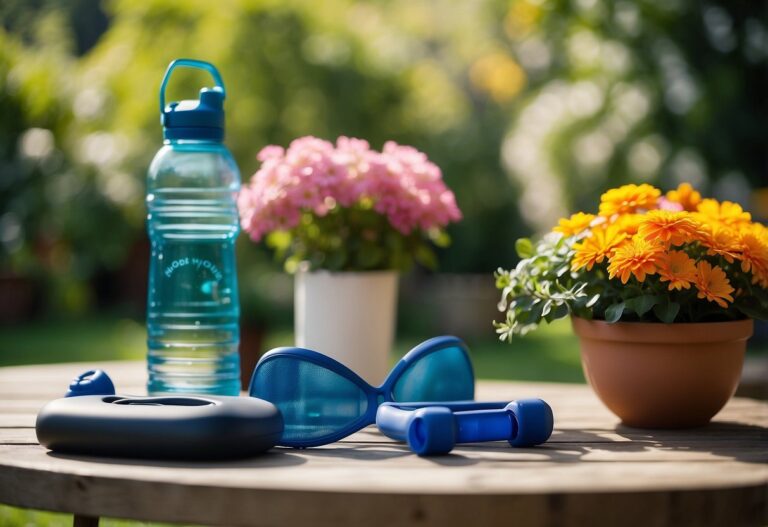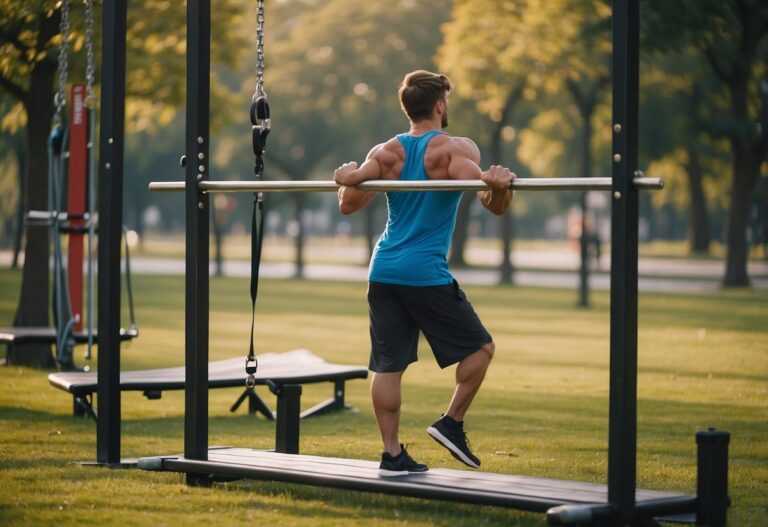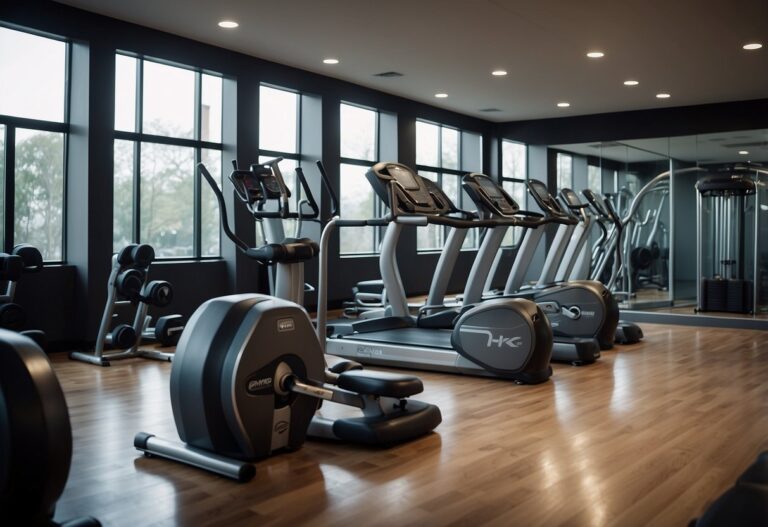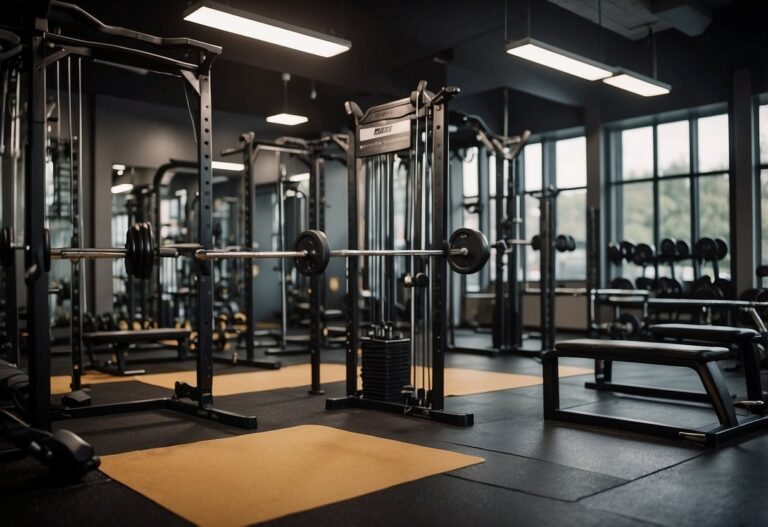As autumn approaches, it’s an ideal time to reassess and refresh your fitness routine. The changing weather provides a unique opportunity to enjoy outdoor activities and take advantage of the crisp, cool air. Whether you’re a seasoned athlete or just looking to get more active, adjusting your workout can help keep things exciting and effective.
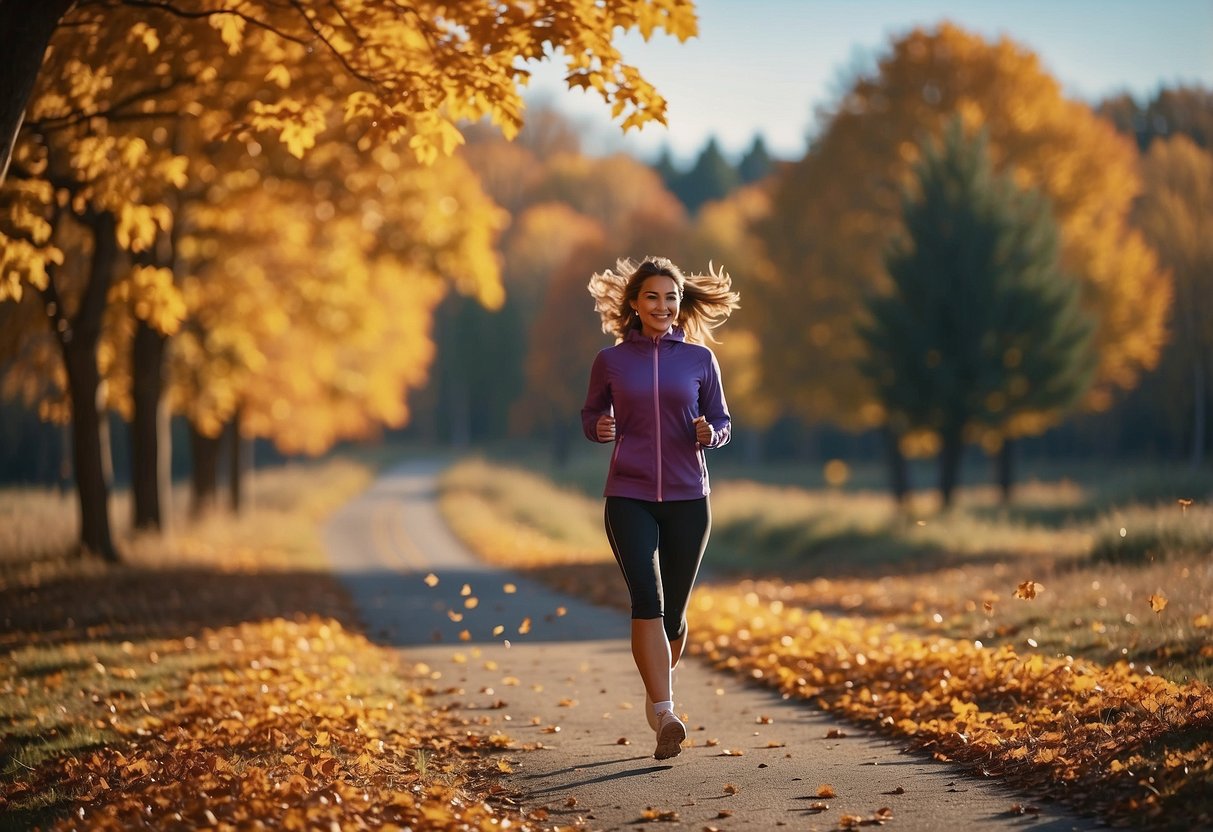
Why is updating your fitness routine in the fall beneficial? Embracing new exercises and activities not only helps keep boredom at bay but also challenges different muscle groups, leading to better overall fitness. Trying out new activities can make your workouts more enjoyable and keep you motivated as the seasons change.
Warm-Up with Dynamic Stretches
Before you jump into your fall workout, it’s crucial to warm up your body with dynamic stretches. These help increase your heart rate and prepare your muscles for exercise. One great dynamic stretch is the Vinyasa Flow. This move strengthens your upper body while stretching your back and front. Perform 5 flows at an easy pace.
Try the Inchworm. Start standing, bend at your hips, walk your hands forward to a plank, then walk them back to standing. It’s a bit more intense than the Vinyasa Flow and really gets your body moving.
Incorporating stretches such as Leg Swings and Hip Rotations can also help. These movements target your lower body, improving flexibility and reducing injury risk. Remember to keep these stretches controlled and deliberate. By warming up properly, you’ll ensure your body is ready for an effective and safe workout.
For more dynamic stretching ideas, you can check this list of exercises. Keep your stretching routine varied to keep things interesting and effective.
Incorporate HIIT Workouts

High-Intensity Interval Training (HIIT) is a great way to boost your fitness during the fall. HIIT involves short, intense bursts of exercise followed by brief rest periods.
Start by scheduling HIIT workouts 1-3 times per week. This allows your body to recover and prevents injury. Using a mix of exercises keeps your routine interesting. Try including exercises like jump squats, burpees, or mountain climbers.
Adding HIIT can be challenging, but the results are worth it. You’ll notice improved fitness and endurance. Remember to listen to your body and take breaks when needed.
Try Outdoor Runs

Running outdoors in the autumn can be a refreshing change. The cool temperatures and crisp air make it easier to run longer without overheating. Plus, the changing colours of the leaves provide a beautiful backdrop.
When you run outside, you can vary your route. Running on different terrains like pavement, trails, or grassy fields can help work different muscle groups.
If you like challenges, try including hill sprints in your routine. This can improve your strength and endurance. Remember to stay safe by wearing reflective gear if you’re running in low light conditions.
Join a Yoga Class

Trying a yoga class can be a great way to stay active during the autumn months. It’s not just about exercise; it’s a whole-body experience that combines movement, breathing, and relaxation.
When you attend your first class, let the instructor know it’s your first time. They can help with adjustments and ensure you’re comfortable.
Arrive at least 10 minutes early. This gives you time to settle in, place your mat, and get ready before the class starts. Don’t worry if you feel a bit nervous; everyone was a beginner once.
Don’t skip Savasana at the end of the class. It might seem like lying down, but it’s important for relaxation and letting your body absorb the practice.
Make sure to come on an empty stomach. Wait about an hour after a light snack or two hours after a big meal before starting your session.
Always listen to your body and don’t push too hard. Use props if needed, and remember it’s about finding your own balance and calm.
Engage with the practice and enjoy the support of the yoga community. This can make your autumn workouts more enjoyable and fulfilling.
Add Strength Training

Adding strength training to your fitness routine can make a big difference. It helps build muscle, which can boost your metabolism. Try starting with simple exercises like squats and push-ups.
Consider using weights or resistance bands to add more challenge. You don’t need a gym; you can do these at home.
Remember to keep proper form to avoid injuries. Pay attention to how your body feels. Start slow and gradually increase the weight or resistance.
Integrating strength training can give you more energy and improve your overall fitness. It’s a great way to feel stronger and more capable in your everyday activities.
Utilise Resistance Bands

Using resistance bands in your fall workouts is a great way to boost strength and endurance. These bands are versatile and easy to use, making them perfect for any fitness level.
Start by stepping on the band, shoulder-width apart. Then, pull the band up so it rests on the back of your arm. Perform a squat, keeping your chest up and your heels down.
Another effective exercise is attaching the bands around each end of a barbell. Anchor them with heavy dumbbells on the floor. From there, do a bench press to add extra resistance and challenge your muscles.
Resistance bands are also handy for hip exercises. Lie on your back and lift your hips, pressing your thighs out against the band’s resistance for a great glute workout.
These bands can improve your form and technique, helping you get the most out of every exercise. Remember to always maintain good posture to avoid any injuries.
You can explore more exercises and routines, like the ones on sites such as Nerd Fitness and Gymshark, to keep your workouts varied and fun.
Try incorporating resistance bands into your routine this autumn to see noticeable improvements in strength and flexibility.
Include Plyometrics
Plyometrics can boost your workout by adding explosive movements. Exercises like jumping squats and burpees help build strength and agility. You can start with simple moves that require minimal equipment.
When you perform plyometrics, focus on proper form to avoid injury. For example, if you’re doing a jump, make sure to land softly on your feet.
You can integrate plyometrics into your routine by using it as a warm-up or as part of a high-intensity interval training (HIIT) session. This keeps your workouts varied and engaging.
Stay Hydrated
Staying hydrated is crucial when you’re getting fit in the autumn. Drink water regularly throughout the day to keep your body ready for exercise. Before starting your workout, aim to drink about 16 to 24 ounces of water. This will prepare your body for the physical activity ahead.
During your exercise, try to sip water frequently. Carry a water bottle or use a hydration pack for easy access. This ensures you stay hydrated without interrupting your workout. If you’re exercising for a long period, consider adding an electrolyte drink to replace fluids and minerals lost through sweat.
After your workout, remember to rehydrate by drinking water. Your body needs to replenish what it lost during exercise to recover efficiently. On days when you’re less active, simply aim to drink half your body weight in ounces of water to maintain good hydration levels.
For those cool autumn days, you might not feel as thirsty, but it’s still important to drink water. Cooler weather can trick your body into thinking it’s not losing fluids. Be mindful and keep a water bottle handy to remind yourself to drink regularly. Enjoy your workouts and stay hydrated for optimal performance. For more tips and tricks on hydration, check out this guide.
Monitor Your Progress
Keeping track of your fitness progress is essential. You can start by taking progress photos. Snap a photo of yourself at the start of your workout journey and continue to take them regularly.
Keep an eye on how your clothes fit. It’s a simple way to notice changes in your body. If your clothes feel looser or tighter, it can indicate progress.
You can also record your training sessions. Write down the sets, reps, and weights you use. This helps you see improvements over time and keeps you motivated.
Another effective method is to track your body weight. Weigh yourself under the same conditions, like in the morning before breakfast.
Measure your body fat percentage if possible. This can give you a clearer picture of how your body is changing.
Focus on Core Exercises
Working on your core is crucial for better balance and stability, especially as you age. A strong core helps prevent falls by enhancing your body’s ability to maintain proper posture and move efficiently.
Planks are excellent for building core strength. Start by holding the plank position for 15 seconds and gradually increase your time. This exercise targets your abs, back, and shoulders.
Heel-to-Toe Walks improve balance and coordination. Walk in a straight line, placing the heel of one foot directly in front of the toes of the other.
Standing on One Foot is simple but effective. Try to hold this position for 10 seconds and work your way up to 30 seconds. This helps build leg and core strength. For more ideas on core exercises, check out these best core workouts.
Incorporating these exercises into your routine will make you stronger and more balanced, helping to reduce the risk of falls.
Benefits Of Autumn Workouts

Autumn workouts come with unique advantages, from increasing your energy and improving mood to boosting your immunity. Let’s dive into these benefits.
Boosted Energy Levels
Exercising outdoors during autumn can significantly boost your energy levels. The cooler temperatures make it more comfortable to engage in activities such as running, hiking, or cycling. Unlike summer, when heat can sap your strength, the autumn weather is invigorating.
Fresh air also plays a crucial role. Breathing crisp air helps you feel more awake and alert. This is especially beneficial if you find yourself tired in the mornings. Taking a brisk walk or jog in the park can revitalise you for the day ahead.
Additionally, the changing scenery can be motivating. Seeing the leaves change colour and fall can add variety to your routine. This natural change keeps your workouts interesting and engaging, ensuring you stay active and maintain high energy levels.
Improved Mood
Autumn workouts can greatly improve your mood. Being outside more often allows you to soak up Vitamin D from the sun, which is vital for your mental health. Although the days get shorter, making the most of daylight helps in reducing feelings of depression and anxiety.
Engaging in physical activity releases endorphins, the body’s natural mood lifters. Whether it’s a jog through the park or a bike ride, these activities can leave you feeling happier and more relaxed.
Social interaction also plays a part. Joining group activities like yoga or boot camps provides a sense of community. Meeting new people and sharing experiences fosters a supportive environment that can enhance your mood.
Enhanced Immunity
Staying active during autumn strengthens your immune system. As the weather cools, colds and flu become common. Regular exercise can help your body fend off these seasonal illnesses.
Outdoor workouts also expose you to varied environments, which can improve your immune response. The fresh air and moderate sun exposure boost your body’s natural defences, making you less susceptible to viruses.
Keeping a balanced workout routine that includes both cardio and strength training further enhances your immunity. Exercises like running, brisk walking, and light resistance training promote overall health, ensuring your body remains resilient through the season.
Engaging in regular workouts during autumn isn’t just about staying fit; it’s about keeping your body and mind in optimal health.
Optimal Outdoor Exercises

Fall provides a perfect backdrop for outdoor physical activities, thanks to the cooler temperatures and stunning scenery. These exercises can help you stay fit and enjoy the beauty of autumn at the same time.
Running And Jogging
Running and jogging are excellent ways to take advantage of the fall weather. The cool air helps keep you from overheating, and the colourful leaves make for a scenic route. Running can be done in parks, on trails, or around your neighbourhood.
If you’re new to running, start with a combination of running and walking. For seasoned runners, this season is ideal for increasing your mileage or speed. A key tip is to wear layers that you can remove as you warm up.
Consider investing in a good pair of running shoes to prevent injuries. Be mindful of fallen leaves which can make paths slippery. Always stretch before and after your run to prevent muscle soreness.
Cycling
Cycling in autumn can be a refreshing experience. Cooler temperatures mean less sweating, and the vivid fall colours provide a beautiful backdrop. You can cycle on various terrains, from city roads to countryside trails.
If you prefer off-road cycling, mountain biking through forest trails can be exhilarating. Ensure your bike is in good condition, especially the tyres, and always wear a helmet. Layer your clothing to stay warm without overheating.
Cycling is great for cardiovascular health and works out your leg muscles. It’s also a low-impact activity, making it suitable for people of almost all fitness levels. Plan your route ahead and bring plenty of water, especially for longer rides.
Hiking
Hiking is a wonderful way to immerse yourself in nature while getting a good workout. The fall season offers colourful foliage and cooler, comfortable temperatures for longer hikes. Choose trails that match your fitness level, from easy walks to challenging climbs.
Wear sturdy hiking boots to support your ankles and prevent slipping. Bringing a map or using a trail app can help you stay on course. Don’t forget to pack snacks, water, and a light jacket. Layers are key, as temperatures can vary throughout the day.
Hiking is not only good for your physical health but also for mental well-being. It allows you to disconnect from daily stress and enjoy the tranquillity of nature. If hiking with friends or family, it’s a great way to bond and create lasting memories.
Adapting Your Routine For Colder Weather

As the weather cools down, it’s essential to adjust your workout routine to stay safe and effective. This section covers key changes to focus on, including warming up properly and choosing the right clothing.
Warming Up Effectively
In colder weather, warming up becomes even more important. The cool air can make your muscles stiffer, increasing the risk of injury. Start with 5-10 minutes of light cardio, such as jogging or jumping jacks, to raise your heart rate and body temperature.
Dynamic stretches are another great addition. Unlike static stretching, dynamic moves—like leg swings or arm circles—help prepare your muscles for the workout ahead. Focus on movements that mimic the exercises you’ll be doing.
Personal tip: I find that incorporating light strength exercises, such as lunges or squats, during the warm-up helps activate the muscles you’ll use in your main session.
Stay consistent with your warm-ups, especially if you usually skip them. Your body needs that extra preparation in the cold.
Layering Clothing
Choosing the right clothing for cold weather workouts is crucial. Layers are key because they help you regulate your body temperature. Start with a moisture-wicking base layer to keep sweat away from your skin. Cotton is not ideal as it retains moisture, leading to a colder, damp feeling.
Add an insulating layer made of fleece or wool to trap heat, and top it off with a windproof and waterproof outer layer to protect you from the elements. Avoid overdressing, as you can overheat, leading to excessive sweating and eventually chills.
Accessories, like hats, gloves, and thermal socks, are also important. Keeping extremities warm helps maintain overall body heat. Remember to remove layers as you warm up to prevent overheating.
Using these tips, you can keep your workouts effective and enjoyable, even when the temperatures drop.



